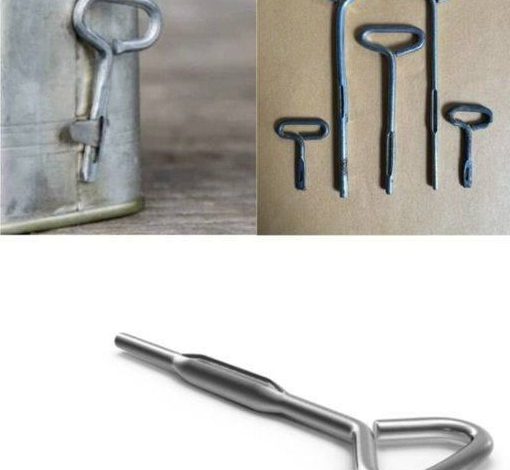
ADVERTISEMENT
The Evolution and Significance of Tin Can Keys
A Tool from the Past
In a world dominated by modern conveniences, certain tools from the past evoke nostalgia and curiosity. One such tool is the tin can key, an ingenious yet simple device that played a crucial role in food preservation and accessibility. The image showcasing different sizes of tin can keys, along with their application on a can, provides a glimpse into a bygone era of innovation and practicality.
The Origins of Tin Can Keys
ADVERTISEMENT
Tin can keys emerged in the early 20th century as a solution to the problem of opening canned goods. Before the advent of modern pull-tab cans and electric can openers, accessing the contents of a sealed tin can was a challenging task. The invention of the tin can key revolutionized this process, making it easier and more convenient for people to open cans without the need for complicated tools or significant effort.
How Tin Can Keys Work
*
The tin can key is a simple yet effective tool. It is typically made of metal and consists of a handle and a thin, flat, cylindrical shaft with a slit. The key is designed to attach to a small metal tab or strip on the can. By twisting the key, the metal strip is rolled around the shaft, gradually tearing open the can along a scored line. This process is repeated until the can is fully opened, allowing access to its contents.
The Different Types of Tin Can Keys
Tin can keys came in various sizes and shapes to accommodate different types of cans. The image shows a range of keys, from small to large, each tailored for specific can sizes and designs. Some keys were used for canned meats, fish, or other food products, while others were designed for larger containers of goods like coffee or powdered milk.
ADVERTISEMENT
The Significance in Food Preservation
The introduction of tin can keys had a significant impact on food preservation and distribution. Canned goods became more accessible and practical for everyday use, especially during times of scarcity or travel. During wars, expeditions, and other long journeys, canned food provided a reliable and long-lasting source of nutrition. The tin can key made it possible to access these vital supplies easily, ensuring that people could sustain themselves with minimal resources.
Collecting and Preserving History
Today, tin can keys are considered collectible items, valued for their historical significance and unique designs. Collectors and enthusiasts seek out these vintage tools as tangible reminders of a time when simplicity and ingenuity were paramount. Preserving and showcasing these keys help keep the history of food preservation and packaging alive, educating future generations about the innovations of the past.
The Transition to Modern Methods
ADVERTISEMENT
With the advent of modern can openers and pull-tab cans, the use of tin can keys has largely faded. However, their legacy endures in the continued evolution of food packaging technology. Modern cans are designed for convenience and ease of use, building on the principles established by the humble tin can key. The evolution from manual keys to automated openers reflects the broader trend of innovation aimed at improving everyday life.
Conclusion
The tin can key, a small yet powerful tool, played a pivotal role in the history of food preservation and accessibility. Its simple design and effective functionality made it an essential item in households and expeditions alike. While modern technology has largely replaced the need for such keys, their significance endures as symbols of human ingenuity and the relentless pursuit of convenience. As we marvel at the ease with which we open cans today, it’s worth remembering the legacy of the tin can key and the era it represents.
ADVERTISEMENT




